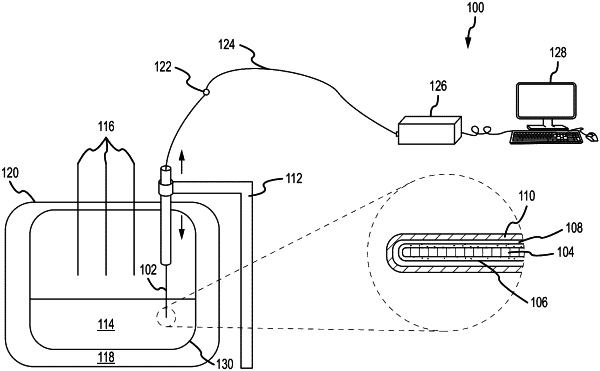| CPC G01K 11/32 (2013.01) [C21C 5/52 (2013.01); F27D 21/0014 (2013.01); G01K 11/12 (2013.01); G02B 6/02395 (2013.01); H01L 31/0216 (2013.01); H05B 7/148 (2013.01); C21C 2005/5288 (2013.01)] | 24 Claims |

|
1. A temperature sensor comprising:
a sapphire optical fiber structured to produce a thermal emission representative of a molten steel into which the temperature sensor is inserted;
a nanoporous cladding layer covering at least a portion of the sapphire optical fiber;
a refractory housing covering at least a portion of the nanoporous cladding layer;
an air gap fully-circumferentially around the sapphire optical fiber, the air gap separating the sapphire optical fiber from the refractory housing; and
a spectrometer coupled to the sapphire optical fiber and configured to receive the thermal emission and to generate, in response, a radiation spectrum indicative of a temperature of the molten steel.
|